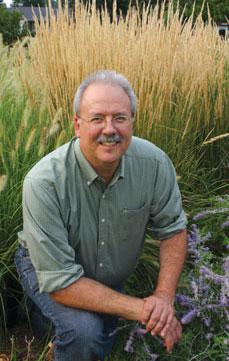 Local food economist Ken Meter(Jerry Carlson/Agri-Energy)Ken Meter, director of Minneapolis-based Crossroads Resource Center, is probably the country’s foremost thinker on the role of food in creating robust local and regional economies.
Local food economist Ken Meter(Jerry Carlson/Agri-Energy)Ken Meter, director of Minneapolis-based Crossroads Resource Center, is probably the country’s foremost thinker on the role of food in creating robust local and regional economies.
I first encountered him at a Community Food Security Coalition conference in Atlanta in 2005, where he gave a presentation that forever changed the way I look at agricultural economics. Ken showed that over and over again, in agriculturally intensive regions across the country, large-scale commodity farming is a net economic loss for farmers and their surrounding communities. He demonstrated that in areas such as the Corn Belt, farmers typically spend more money buying inputs and servicing debt than they bring in selling their crops — and no, federal commodity subsidies don’t make up the difference. Moreover, right in the middle of some of the world’s most fertile land, almost all the food consumed by Corn Belt residents is trucked in from outside the region, and almost all the region’s food dollars flow out. Add it all up, Ken shows, and industrial agriculture extracts wealth from farming communities and delivers it to input suppliers (think GMO seed giant Monsanto) and grain buyers (think grain traders like Archer Daniels Midland and industrial-meat companies like Tyson that use the cheap grain for animal feed).
His pioneering study of the farm and food economy of Southeast Minnesota, Finding Food in Farm Country, can be downloaded as a PDF; and the rest of his publications can be found here.
In part one of my podcast with Ken, we talked about how we got our current farm system, drawing on Ken’s experience as a agriculture journalist in Minnesota during the farm crisis of the 1980s. Next week, we look at the alternative systems sprouting up all over the country — and how food can be used a tool for building wealth in communities, not just extracting it.


